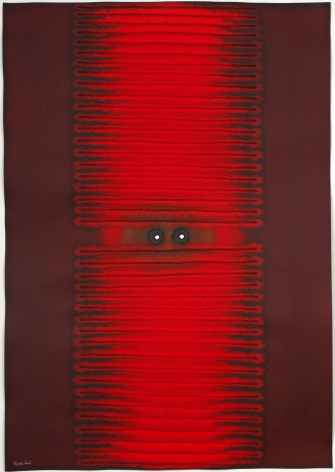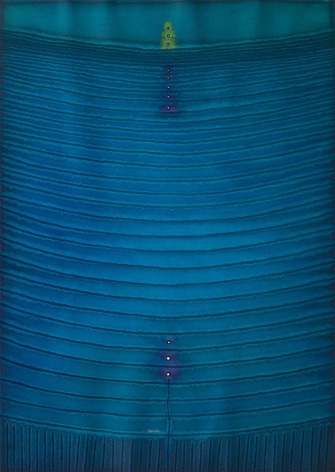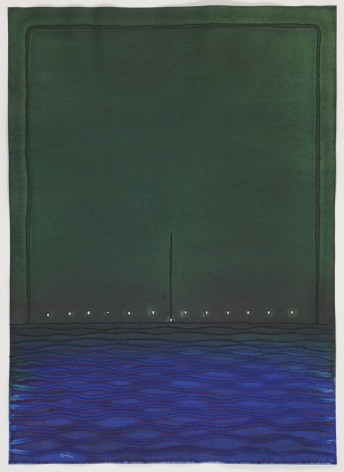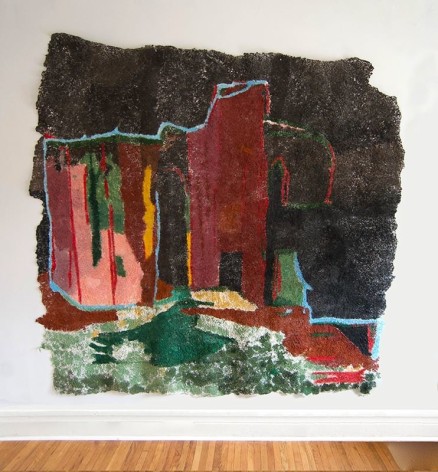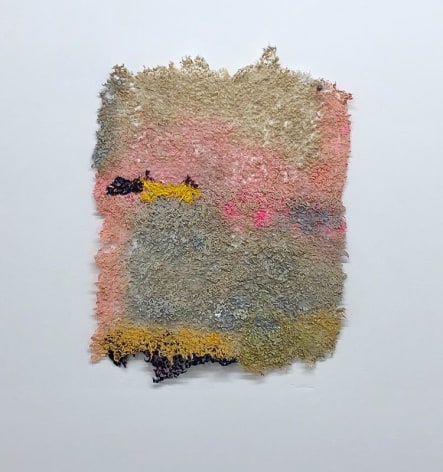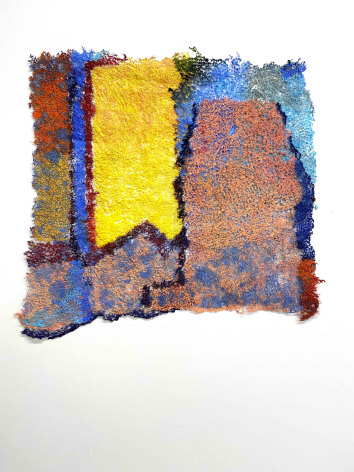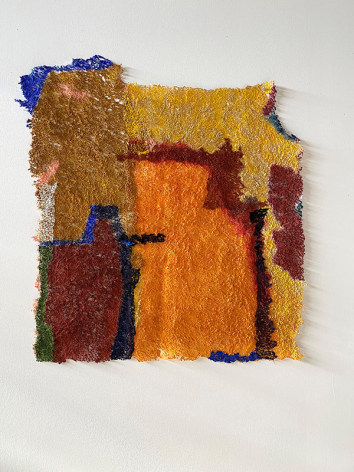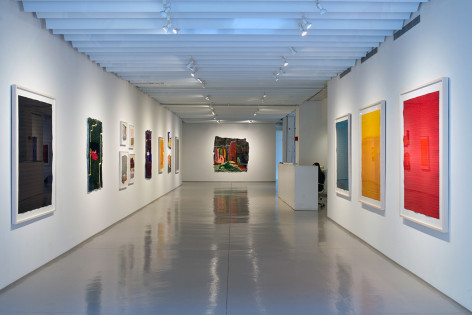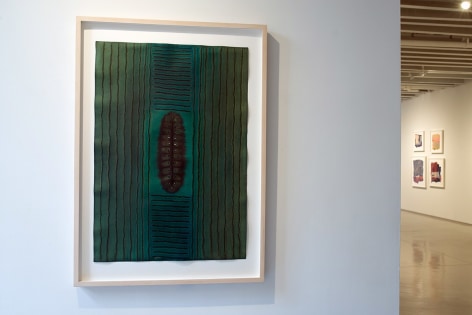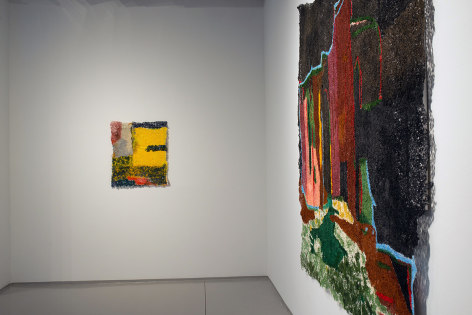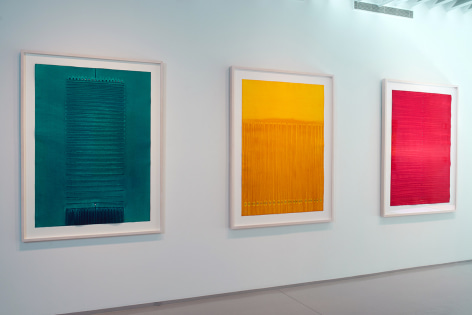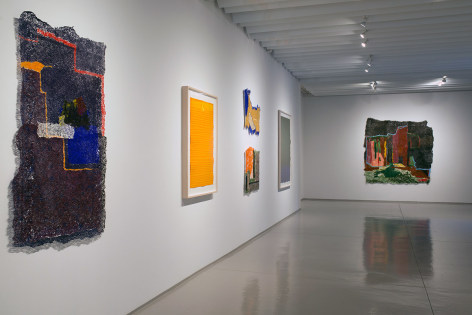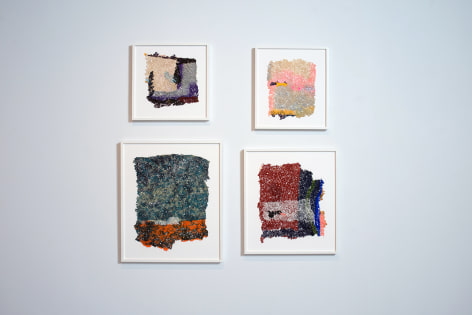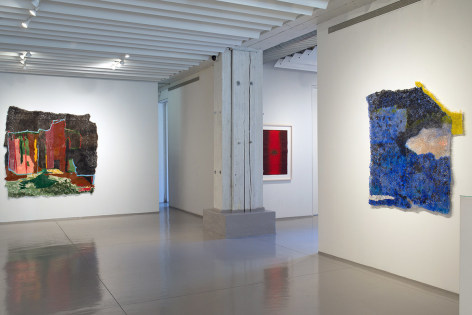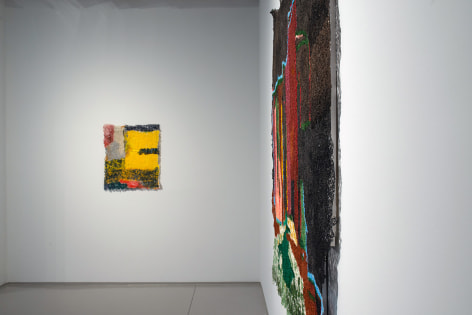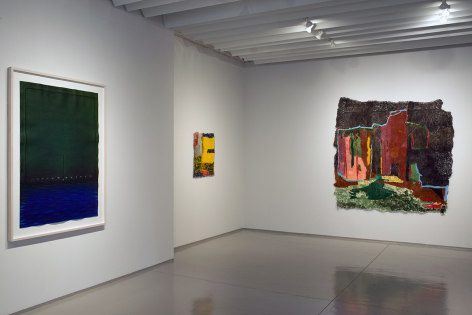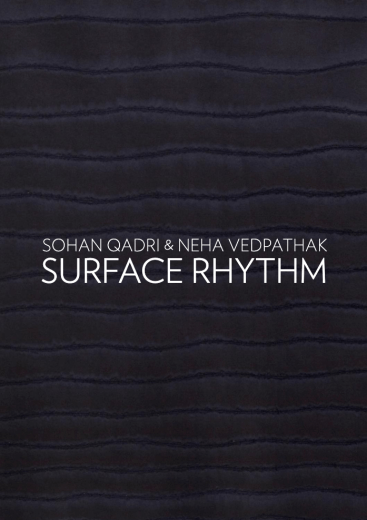VIRTUAL TOUR
Sundaram Tagore is pleased to present an exhibition that brings together work by Sohan Qadri (1931 – 2011) and Neha Vedpathak (b. 1982), two Indian-born artists who push the boundaries of traditional media, transforming sheets of paper into richly colorful three-dimensional mediums.
The work in this exhibition highlights the intention behind Qadri and Vedpathak’s unique choice of material and their process-driven approaches. Both artists spent the early years of their careers experimenting with different media before turning to paper, which, while agile and responsive, can also be unforgiving and requires intense focus and skilled hands.
Qadri has been represented by the gallery since its inception in 2000. At the time, he was part of a select group of master artists who were outside the accepted Western cannon but were so obviously groundbreaking and working with a universal language, that it was critical to share with a wider audience. Since then, Qadri’s work has been acquired by museums and private collectors across the globe and in 2011, he was the subject of the monograph Sohan Qadri: The Seer, published by Skira Editore.
Though he spent much of his working life in Copenhagen, Denmark, Qadri grew up in northern India, where he was exposed to Sufism, Hinduism, and Sikhism. He was particularly inspired by Vajryana or Tantric Buddhism, which emphasizes the notion of sunyata or emptiness. In search of a process that would enable art-making while in a meditative state, Qadri found his spiritual medium in inks and dyes on paper, employing a distinctive technique of painting and carving that he would use for the rest of his life.
To begin his process, Qadri would bathe thick intaglio paper in acid-free water. Once it was swollen with liquid, he would score the surface with various gouging and cutting tools, carving in stages while applying inks and dyes. The serrated surfaces convey a sense of energy and rhythm. In the artist’s hands, the very nature of paper was transformed from a flat, two-dimensional surface into a vibrantly hued textile-like medium.
Neha Vedpathak is a Detroit-based artist who creates sculptural installations and wall reliefs made from paper. She was introduced to the Chelsea gallery in 2019, when she was selected by curator Betty Seid for the exhibition Alterations Activation Abstraction. Although she has only been exhibiting since 2006, Vedpathak has already received critical recognition from institutions such as the Detroit Institute of Arts, which acquired and exhibits her work across from celebrated artist Anish Kapoor.
Vedpathak began her career as a painter, creating minimalist abstract works on canvas, but like Qadri, she became restless and sought to move beyond the two-dimensional plane. After experimenting with different materials for a period of time, in 2009, she came across handmade Japanese paper, which eventually became the focus of her artistic investigations.
Using a rigorous self-developed technique, which she refers to as “plucking”, Vedpathak spends hours separating the paper’s fibers with a tiny pushpin. Similar to Qadri’s meditative state, there is a spiritual aspect to her slow and disciplined process, which she likens to meditative chanting tuned to a slower pace.
The resulting works resemble swaths of lace fabric, which she paints and sews into striking abstract compositions. Part painting, part collage, Vedpathak’s sensuous, tactile constructions seemingly float while casting intricate shadows on the wall. She creates depth with nuanced shifts of color and by leaving small areas of the composition unplucked, which plays off the subtle transparency of the lace-effect.
Having lived in multiple locations, including Pune, India, where she was born, Chicago, Phoenix, and now Detroit, Vedpathak’s practice is deeply inspired by her physical environment and she often draws from the natural world. Recently, however, she has started to incorporate architectural elements of the cityscape that surrounds her, referencing the abandoned structures and peeling paint of a city in constant flux, where widespread urban decay is undergoing a slow renewal.
Through her work, Vedpathak addresses contemporary social themes, including politics, cultural identity and economic disparity, yet, like Sohan Qadri, she also considers larger spiritual themes, exploring ideas of transformation and the cyclical nature of life.
ABOUT THE ARTISTS
The late poet, painter and Tantric yogi Sohan Qadri was born in Chachoki, Punjab, India. In 1965, he left India and began a series of travels that took him to East Africa, North America and Europe. After settling in Copenhagen in the 1970s, Qadri participated in more than forty solo shows, in Mumbai, Vienna, Brussels, London, Oslo, Stockholm, Montreal, Toronto, Los Angeles and New York.
Qadri’s works are included in the British Museum, London; the Peabody Essex Museum, Massachusetts; the Rubin Museum of Art, New York; the National Gallery of Modern Art, New Delhi; the Los Angeles County Museum of Art; the Royal Ontario Museum, Toronto; as well as the private collections of Cirque du Soleil, Heinrich Böll and Dr. Robert Thurman. In 2011, Skira Editore published the monograph Sohan Qadri: The Seer.
Neha Vedpathak was born in Pune, India, 1982. Her works have been shown at Arizona State University Art Museum, Tempe; Weatherspoon Museum, Greensboro North Carolina; Detroit Institute of Arts, Michigan; and Centre d’Art Marnay Art Centre, France.

